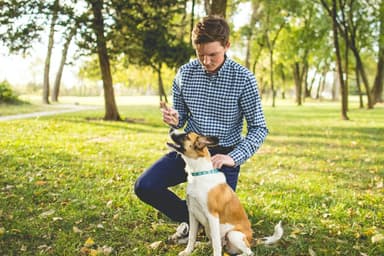As humans, we are aware of the immense responsibility that comes with owning a pet. Whether fulfilling its basic needs or providing unconditional love and affection, our furry friends require much from us. One essential task is teaching them how to behave – but what does this entail? With the right guidance and patience, you can easily teach your pup to obey commands like “stay” or “sit” and curb behavior such as barking excessively. Read on for tips on bringing out the best in your four-legged pal.
1. Enroll Your Dog in a Training Class
Enrolling your dog in a professional training class can be incredibly beneficial, especially for first-time pet owners. Dog trainers at southenddogtraining.co.uk have structured courses that offer comprehensive lessons that cover basic training commands, etiquette, and even advanced tricks. Moreover, they allow your dog to socialize with diverse breeds and temperaments, fostering better behavior in public spaces.
A professional trainer can also provide expert guidance on specific behavioral issues your dog may display, giving you more insight into how to address them effectively. Additionally, these classes offer a supportive environment where you can get feedback and support from other pet owners going through similar training challenges.
2. Establish a Routine to Help Your Dog Get Accustomed
Establishing a consistent routine is integral to helping your dog adjust to their surroundings and understand what is expected of them. Dogs are creatures of habit and thrive on consistency, and a structured daily schedule can significantly help their training. For instance, feeding your dog at the same time each day can foster discipline and patience.
Similarly, regular walks or exercise sessions can help them understand when it’s time to play and when it’s time to rest. Additionally, consistency in rewarding good behavior and discouraging negative behavior can make your training commands more effective. Remember, patience and persistence are key in this process – changes won’t happen overnight, but with time, your dog will start to understand and adapt to their routine.
3. Use Positive Reinforcement For Good Behavior
Positive reinforcement is a proven method in dog training. It’s simple: reward good behavior and ignore unwanted ones. Treats can be a great tool to encourage dogs to behave well, as they are highly motivated by food. You reinforce the idea that this behavior is desirable by giving a treat when your pup follows a command or displays positive behavior.
However, it’s important to remember that rewards can extend beyond food. Praise and physical affection, like pats or cuddles, are equally effective. The key is understanding what motivates your dog and using it for positive reinforcement. Conversely, avoid scolding or punishing your dog for bad behavior, which can cause confusion and fear, making training more difficult.
4. Use Body Language to Communicate
Dogs are incredibly intuitive creatures and can easily pick up on your body language and tone of voice. When training your dog, using consistent hand signals or body movements alongside verbal commands is crucial. This way, if your pup can’t hear you, they can still understand what you want them to do.
Furthermore, positive body language, like patting, smiling, and maintaining eye contact, can encourage your dog to respond positively. On the other hand, avoid using negative body language like yelling or aggressive gestures, as this can cause fear and anxiety in your pup.
5. Incorporate Playtime Into the Training Session
Just because you are training your furry friend doesn’t mean it must be all work and no play. Incorporating playtime into the training session can make it more enjoyable for your dog and keep them engaged. For example, using toys to teach a command like “fetch” or playing hide-and-seek can improve their focus and reinforce positive behavior.
Remember, dogs are intelligent creatures and need mental stimulation just as much as physical exercise. Incorporating activities that challenge their minds can improve their behavior and strengthen the bond between you and your furry friend.
6. Monitor Progress and Adjust Strategies When Necessary
Monitoring your dog’s progress throughout training is crucial for its success. This allows for adjustments in strategy if certain techniques are not yielding the desired results. You can track progress by noting your pet’s responses to commands over time, their behavior in different situations, or even through video recordings of training sessions.
If there needs to be more improvement, try modifying your approach or seeking expert advice. This could involve changing rewards, trying new exercises, or adjusting commands. Every dog is unique, so flexible and adaptive training strategies are key to success.
Teaching your dog to behave requires patience, consistency, and positive reinforcement. You can train your pup to understand expectations in various settings with the right approach. Remember that each dog is unique, and training may vary based on breed or temperament. Be patient and understanding; soon, your dog will display the desired behavior. A well-behaved dog reflects good training and a happy pup.

Leave a Reply